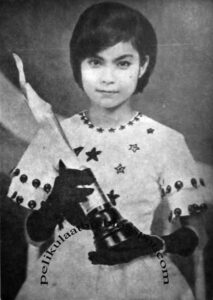Vancouver, Canada, 2025 March 21 – Nora Aunor remains a timeless presence whose light never dimmed, only deepened. Her story is not just about fame, but about how an ordinary girl from the province lit up a nation and gave rise to a fandom that would change the very fabric of Filipino stardom: the Noranians.
The Journey Begins: A Voice Heard Across the Airwaves
Born Nora Cabaltera Villamayor on May 21, 1953, in Iriga City, Camarines Sur, she didn’t have the privilege of a glamorous entrance into show business. She was a “probinsiyana,” small in stature, morena, and soft-spoken—qualities often dismissed in the face of showbiz’ love for mestiza features and towering beauty queens.
But what she had was a voice.
In 1967, she won the singing contest Tawag ng Tanghalan, instantly capturing hearts across the archipelago. That golden voice cracked open the gates to an industry that would soon realize she wasn’t just a singer—she was a force of nature.

From Superstar to Serious Actress
The late 1960s to early 1970s saw the rise of the “Guy and Pip” love team—Nora with Tirso Cruz III. Their movies, love songs, and memorabilia sparked teenage hysteria. But even amid that superstardom, Nora quietly began proving she was not just the darling of the masses—she was a serious actress.
Her performance in Tatlong Taong Walang Diyos (1976), set during the Japanese occupation, marked a pivotal shift. As Rosario, a woman grappling with love, war, and betrayal, Nora delivered a raw performance ahead of its time. Then came Himala (1982), Ishmael Bernal’s masterpiece. Her role as Elsa, a faith healer whose claimed visions ripple through a drought-stricken town, immortalized her in Filipino film history and on the global stage. “Walang himala!”—her haunting scream—echoed through generations and cemented her status as a cultural icon.

A Cinematic Legacy: Films That Spoke the Truth
Nora’s filmography is a library of Philippine soul. From Bona (1980), where she plays a fan obsessed with a washed-up actor, to Thy Womb (2012), her poignant comeback as a barren Badjao midwife, her roles speak of women rarely given voices on screen—poor, rural, flawed, yearning, but fiercely alive.
She dared to be ugly onscreen, making pain visible. She told the stories of those we’d rather forget and made them unforgettable.
Noranians: More Than a Fandom, A Movement
Out of her unlikely rise came an even more powerful phenomenon—the Noranians. More than fans, they were believers in the dream she represented. For every young girl who felt too dark, too short, too poor, too “probinsiyana” to matter, Nora was proof that dreams were not exclusive to the elite. They were for those who dared to sing, feel, and act even when the world said no.

A National Artist, A National Treasure
In 2022, Nora Aunor was named National Artist for Film and Broadcast Arts—an honour long overdue, but finally, a recognition of the magnitude of her contribution to Philippine culture. She didn’t just play roles; she shaped an entire cinematic language.
Her influence wasn’t confined to film. It reached into literature, theatre, and even politics. Her presence inspired critical discourse, academic studies, and an entire generation of actors to embrace naturalism and emotional honesty.
The Legacy Lives On
Nora Aunor remains a symbol of authenticity, not perfection. Her life, punctuated by comebacks and controversies, proves that greatness is not about being flawless. It’s about showing up, again and again, with truth in your voice and fire in your eyes.
Nora Aunor didn’t just create fans—she created believers. She taught us that sometimes, the most powerful miracles come not from the heavens, but from a voice that dared to speak from the heart of the province, straight into the soul of a nation.
Today, as the Filipinos and Noranians around the world mourn her recent passing, we are reminded not just of what Nora Aunor gave to Philippine cinema but also of what she gave to all of us who saw ourselves in her. The Superstar may have taken her final bow, but her voice, legacy, and the dreams she awakened in generations of “probinsiyanas” will echo forever.

Our deepest condolences to her family, her friends, and to every Noranian who loved her not just as a star, but as a symbol of what is possible.
To the beloved Nora Aunor—thank you for the courage, the art, the truth. Paalam, Ate Guy. Ang himala ay ikaw.
(MBB)



